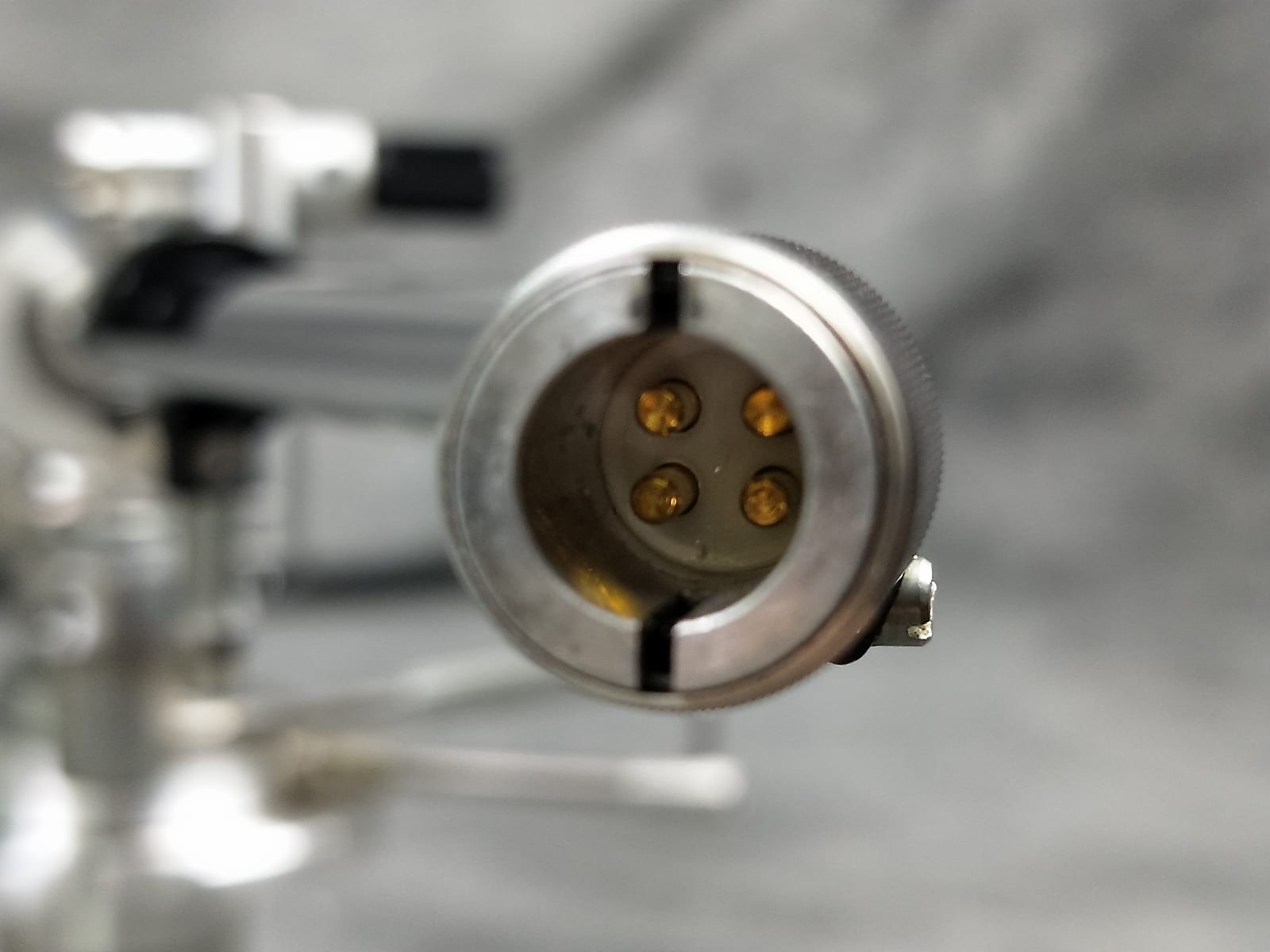Don’t forget to replace the rubber sleeve that isolates the rear counterweight portion from the front portion of the arm. Your new wire will need to pass thru it.
IF you can handle the super delicate Litz Wire, eliminating connections seems advantageous, but the whole world has been listening with those and many other wire types/cables/connectors/devices in play very happily.
I started with Litz, soldered,

thus the arm is ’captured’, which is why I located the Junction Box temporarily on the armboard, then moved the box to the rear edge of the plinth when in place.
as the arm pivots, the Litz wire moves a bit, in my case it rubbed against the edge of a hole it passed thru, delicate silk insulation wore off, Hum developed,
I changed to Steve Leung of VAS’s favorite tonearm wire/VPI mini-din/RCA Junction box. I can remove the arm board and tonearm with a simple disconnect.

more here Litz Wire Fun
I did not hear any difference between former Litz, and whatever Steve used, I can still hear the differences between my and my friend’s cartridges.
I think you would hear preferred differences if you tried a MC cartridge. I avoided them (they all were noisy when I was younger) stuck with MM until I decided to redo everything in 2019 which is when I got help here and put my MC/SUT/Vintage MM Phono in McIntosh mx110z chain together.
The phono cable in the pics is Ortofon, RCA to RCA, they have DIN version ...
Ortofon $315. phono cable
strongly recommended by New Art Vinyl, maker of the long black tonearm. Frankly, it doesn’t sound any different to me or my friends than the $6. cheapo phono cable from Amazon I was using while waiting for it.
.................................
As an aside, a different arm with easily adjusted arm height? Azimuth adjustment? Internal silver wire?
I had 3009 and liked it on my Thorens TD124. I installed two Micro Seiki 505S arms, silver wire (long and short versions) on my friend’s Luxman PD444 two arm TT. I like that arm a lot!!!! It has a height adjustable base similar to my Acos Lustre GST-801, loosen, up or dn, tighten by hand. As a matter of fact, I prefer the Acos or the Micro to the SME. The Micro Seiki also has an adjustable collet for the removable headshell, so easy to adjust Azimuth.



